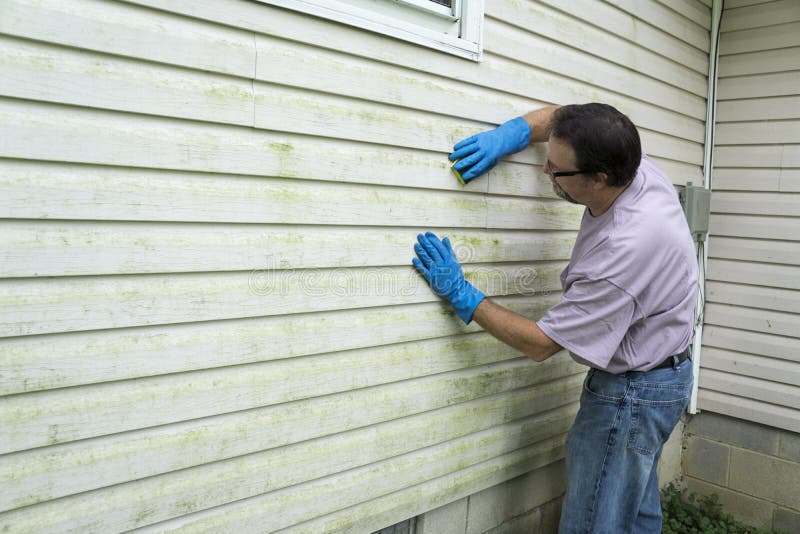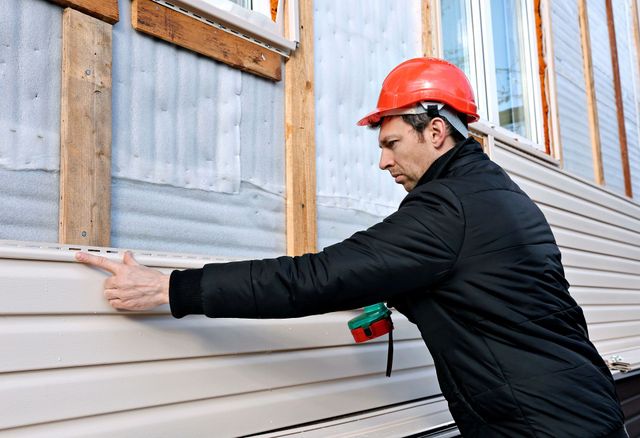Superior Morris Siding Contractor with Comprehensive Siding Services
Superior Morris Siding Contractor with Comprehensive Siding Services
Blog Article
The Vital Guide to the Different Kinds Of Exterior Siding and Their Distinct Benefits
In the world of home renovation, selecting the best siding is a critical decision that influences both visual appeal and practical performance. With so numerous options to take into consideration, which home siding product really stands out for your certain task?
Wood Exterior Siding
Wood siding, a popular selection for domestic exteriors, provides a timeless aesthetic that integrates all-natural elegance with architectural integrity. This house siding product is readily available in numerous designs, consisting of clapboard, tiles, and board-and-batten, permitting house owners to customize their façade to match their layout preferences. Timber exterior siding is normally crafted from long lasting types such as cedar, redwood, or ache, which are understood for their strength and capability to stand up to ecological stressors.
One of the primary benefits of timber house siding is its excellent insulation homes, which can add to power efficiency and reduced home heating expenses. Furthermore, timber exterior siding is naturally degradable, making it an ecologically friendly choice when sourced sustainably. Normal maintenance, consisting of painting or discoloration, can extend its life-span and boost its appearance, enabling house owners to maintain the natural appeal of the timber.
Nevertheless, potential drawbacks include susceptibility to bugs, rot, and weather damages, necessitating adequate treatment and maintenance - morris siding contractor. In spite of these worries, when appropriately taken care of, timber house siding can supply a lovely and durable solution that boosts the personality of a home while offering a warm, welcoming ambience

Vinyl Siding
Plastic house siding has become a leading selection for home owners seeking a low-maintenance exterior choice that incorporates resilience and price. This flexible product is crafted from polyvinyl chloride (PVC), making it resistant to various climate conditions, including moisture and UV rays. As an outcome, vinyl house siding does not warp, rot, or fade, making certain lasting visual appeal.
One of the key benefits of vinyl house siding is its substantial array of styles and shades, allowing house owners to achieve the preferred seek their building without the requirement for constant repainting. Furthermore, vinyl home siding is easy to set up, which can considerably minimize labor costs throughout building or restoration jobs.
Plastic home siding additionally adds to power efficiency. Several options attribute insulation support, which improves thermal performance, aiding to maintain comfortable interior temperature levels and potentially lowering power costs. In addition, its smooth surface helps with simple cleaning, requiring just regular washing with a garden hose to remove dust and debris.
Fiber Cement Siding
Fiber cement exterior siding has gotten traction among house owners and contractors alike because of its exceptional mix of longevity and aesthetic flexibility. Made up of a mix of concrete, sand, and cellulose fibers, this siding choice is engineered to hold up against severe climate condition, consisting of high winds, hefty rain, and temperature changes, making it a long-lasting option for residential exteriors.

Among the key benefits of fiber concrete exterior siding is its resistance to parasites, such as termites, and its non-combustible nature, offering boosted fire security. morris siding contractor. Furthermore, it is readily available in a broad range of designs, shades, and structures, allowing property owners to attain their preferred aesthetic without compromising efficiency
Another advantage is its reduced maintenance needs; fiber cement siding commonly calls for painting or staining every 5-10 years, which see here is less frequent than other materials. wikipedia reference Its durability adds to a lower general price of ownership, as it reduces the demand for regular repairs or substitutes.
Ultimately, fiber cement siding stands for an excellent investment for those seeking a resilient, attractive, and flexible exterior option, incorporating both form and feature to improve the home's visual allure.
Metal Home Siding
The attraction of metal home siding hinges on its durable toughness and modern aesthetic appeal, making it a favored choice for contemporary architecture. Available in products such as aluminum and steel, steel exterior siding supplies a variety of shades and surfaces, allowing house owners to attain a customized appearance that complements their design vision.

Power efficiency is one more considerable advantage, as many steel exterior siding products are made with insulation options that aid regulate indoor temperatures. This can bring about decreased power expenses in time. Additionally, steel siding is typically recyclable, making it an eco-friendly selection for sustainability-minded homeowners.
The installation process for metal house siding can be relatively simple, leading to a quicker turnaround time for building and construction jobs. In general, steel home siding integrates performance and style, making it a sensible option for those looking for a visually appealing and enduring outside surface.
Block and Rock Home Siding
Block and stone home siding sticks out as an ageless choice that boosts the visual beauty of any kind of home. Known for their durability and low maintenance, these materials supply an outstanding return on financial investment while elevating the building's aesthetic charm. Offered in numerous shades, structures, and patterns, block and stone can be customized to match varied architectural designs, from standard to modern-day.
One of the main benefits of brick and rock siding is their power effectiveness. Both materials have natural shielding homes that aid control interior temperature levels, internet possibly reducing cooling and heating expenses. Furthermore, they use superior fire resistance contrasted to other home siding alternatives, adding to boosted security.
Another benefit is their longevity. Brick and stone can last for years, often needing minimal upkeep beyond periodic cleaning. Unlike wood house siding, they are unsusceptible pests and rot, making sure a lasting exterior that endures the components.
Conclusion
In summary, the option of exterior siding significantly affects a home's visual charm, energy performance, and upkeep demands. Each sort of home siding-- whether wood, vinyl, fiber cement, steel, or brick and stone-- uses one-of-a-kind benefits tailored to numerous home owner preferences and ecological problems. Recognizing these options enables informed choices that improve both the sturdiness and aesthetic appeal of domestic exteriors. Inevitably, choosing the ideal siding is necessary for attaining an equilibrium between capability and design in domestic design.
One of the main benefits of timber home siding is its excellent insulation buildings, which can contribute to power effectiveness and lower home heating prices. In addition, wood home siding is naturally degradable, making it an environmentally friendly option when sourced sustainably.One of the main benefits of steel exterior siding is its resistance to various environmental aspects.Power efficiency is another substantial benefit, as many metal siding products are designed with insulation choices that help regulate indoor temperature levels. Each kind of siding-- whether wood, plastic, fiber metal, brick, or concrete and rock-- offers one-of-a-kind benefits customized to numerous house owner preferences and ecological conditions.
Report this page